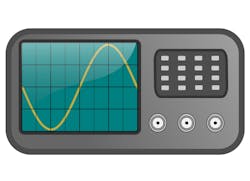Mike’s Blog: Comparing 2 new global oscilloscope market outlooks
For example, last week, reports from two different market intelligence hubs were released that forecast the global oscilloscope market. One is a 125-page publication from Market Insights Reports (MIR), and the other is a 165-page report by Market Study Report (MSR).
Comparing the two, their introductory verbiage is 100% identical. They define what an oscilloscope is, how it works, the current state of oscilloscopes in developed countries, and they note how the global market is expected to see its highest growth rate in the Asia-Pacific region.
While both cover the global oscilloscope market, the two reports differ in their forecast range and expected growth rate.
The MIR publication forecasts the market from 2019 through 2025, stating that that the global oscilloscopes market was valued at $1.48 billion (U.S.) in 2018, and is projected to reach $1.66 billion by 2025 at a compound-annual-growth-rate (CAGR) of 1.4%.
Meanwhile, the MSR publication has a shorter forecast range, forecasting from 2019 through 2024. It also values the 2019 global oscilloscopes market at the same $1.48 billion that MIR did, although perhaps MIR’s figure is from the end of 2018 and MSR’s is from the start of 2019, which would be virtually the same thing. MSR forecasts that the global market size will reach $1.72 billion by 2024 at a CAGR of 2.5%.
Thus, MSR expects the global oscilloscopes market to grow at a considerably faster rate than MIR does through at least 2024, surpassing MIR’s 2025 market value a year earlier.
Both reports, expectedly, cover the same 15 oscilloscope vendors in their report:
- Danaher
- Keysight
- Teledyne LeCroy
- Rohde & Schwarz
- National Instruments
- GW Instek
- Yokogawa
- GAO Tek Inc
- RIGOL Technologies
- SIGLENT
- OWON
- Uni-Trend
- Jingce Electronic
- Lvyang Electronic
- Hantek
Given the essentially identical nature of the two reports besides their forecast range and estimated market values, it’s likely that the two reports were conducted by the same market research firm. But that begs the question: why the forecast discrepancy between the two?
About the Author


